

E-Books → Clark B Oil Capital The History of American Oil, 2016
Published by: Emperor2011 on 28-07-2022, 15:24 |  0
0

Clark B Oil Capital The History of American Oil, 2016 | 3.87 MB
English | 418 Pages
Title: Tulsa's Historic Greenwood District (Images of America)
Author: Hannibal B. Johnson
Year: 2014
E-Books → Oil Capital The History of American Oil, Wildcatters, Independents and Their Bankers
Published by: voska89 on 27-07-2022, 15:52 |  0
0

Bernard F Clark, "Oil Capital: The History of American Oil, Wildcatters, Independents and Their Bankers"
English | ISBN: 0692817328 | 2016 | 446 pages | EPUB | 538 KB
Oil Capital: The History of American Oil, Wildcatters, Independents and Their Bankers
E-Books → German Capital Ships and Raiders in World War II Volume II From Scharnhorst to Tirpitz, 1942-1944
Published by: voska89 on 23-07-2022, 09:10 |  0
0
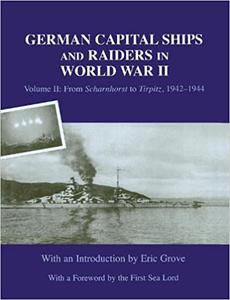
Eric Grove, "German Capital Ships and Raiders in World War II: Volume II: From Scharnhorst to Tirpitz, 1942-1944 "
English | ISBN: 0714652830 | 2002 | 220 pages | EPUB | 5 MB
This volume is a compendium of four Battle Summaries or Naval Staff Histories produced soon after the war by the Naval Historical Branch of the Admiralty. Originally classified and designed for internal use only, these histories are published here for the first time. The documents in this book cover the actions that resulted in the sinking or immobilising of the German warships "Bismarck" and "Graf Spee", and records the struggle to rid the seas of the meance of the armed merchant raiders.
Magazine → Capital France - Août 2022
Published by: voska89 on 21-07-2022, 15:48 |  0
0

Capital France - Août 2022
French | 112 pages | PDF | 106 MB
E-Books → Private Equity and Venture Capital Theory, Evolution and Valuation
Published by: voska89 on 18-07-2022, 14:06 |  0
0

Private Equity and Venture Capital: Theory, Evolution and Valuation
English | 2022 | ISBN: 303107629X | 163 Pages | PDF EPUB (True) | 12 MB
The terms venture capital and private equity may differ across countries. This book discusses venture capital not only as risk capital toward unlisted companies with the aim to enhance the investee firm, but also analyses broader forms of entrepreneurial investment: from early stage financing to buyout and turnaround transaction. This book is divided into four sections. The first section aims to shed light on the terminology and offers a comparison between private equity/venture capital, and the traditional banking sector as financing sources. The second section details the differences between private equity and venture capital transactions on the basis of firm life cycle, and summarizes the main characteristics of both private equity and venture capital investors and investee firms. The third section illustrates the evolution of the private equity and venture capital industry before and after the financial crisis by looking at three fundamental aspects: fundraising, investment and divestment, all in terms of volume and trends. The last section discusses the basic elements of corporate valuation applied to private equity and venture capital industry, with some practical examples.
E-Books → National Intellectual Capital and the Financial Crisis in Israel, Jordan, South Africa, and Turkey
Published by: voska89 on 13-07-2022, 12:06 |  0
0
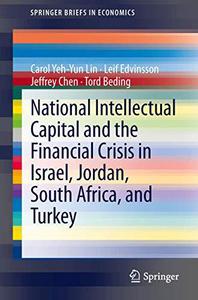
National Intellectual Capital and the Financial Crisis in Israel, Jordan, South Africa, and Turkey By Carol Yeh-Yun Lin, Leif Edvinsson, Jeffrey Chen, Tord Beding (auth.)
2014 | 107 Pages | ISBN: 1461479800 | PDF | 3 MB
In the first decade of the twenty-first century, the biggest event of worldwide proportion was the 2008 global financial crisis, which was caused primarily by ineffective governance, failed surveillance systems, and implementation flaws. While fiscal and monetary policies succeeded in pulling many countries out of a financial freefall, most economies have performed beneath pre-recession levels as governments continued to struggle with their finances. Examining the financial crisis from the viewpoint of intangible assets provides a different perspective from traditional economic approaches. National Intellectual Capital (NIC), comprised mainly of human capital, market capital, process capital, renewal capital, and financial capital, is a valuable intangible asset and a key source of national competitive advantage in today's knowledge economy. The authors-pioneers in the field-present extensive data and a rigorous conceptual framework to analyze the connections between the global financial crisis and NIC development. Covering the period from 2005 to 2010 across 48 countries, the authors establish a positive correlation between NIC and GDP per capita and consider the impact of NIC investment for short-term recovery and long-term risk control and strategy formulation.Each volume in a series of SpringerBriefs on NIC and the financial crisis provides in-depth coverage of the impact of the crisis, the aftermath, future prospects, and policy implications for a regional cluster. This volume focuses on Israel, Jordan, South Africa, and Turkey.
E-Books → National Intellectual Capital and the Financial Crisis in Austria, Belgium, the Netherlands, and Switzerland
Published by: voska89 on 13-07-2022, 12:05 |  0
0
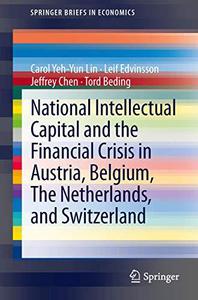
National Intellectual Capital and the Financial Crisis in Austria, Belgium, the Netherlands, and Switzerland By Carol Yeh-Yun Lin, Leif Edvinsson, Jeffrey Chen, Tord Beding (auth.)
2014 | 109 Pages | ISBN: 1461480205 | PDF | 3 MB
In the first decade of the twenty-first century, the biggest event of worldwide proportion was the 2008 global financial crisis, which was caused primarily by ineffective governance, failed surveillance systems, and implementation flaws. While fiscal and monetary policies succeeded in pulling many countries out of a financial freefall, most economies have performed beneath pre-recession levels as governments continued to struggle with their finances. Examining the financial crisis from the viewpoint of intangible assets provides a different perspective from traditional economic approaches. National Intellectual Capital (NIC), comprised mainly of human capital, market capital, process capital, renewal capital, and financial capital, is a valuable intangible asset and a key source of national competitive advantage in today's knowledge economy. The authors-pioneers in the field-present extensive data and a rigorous conceptual framework to analyze the connections between the global financial crisis and NIC development. Covering the period from 2005 to 2010 across 48 countries, the authors establish a positive correlation between NIC and GDP per capita and consider the impact of NIC investment for short-term recovery and long-term risk control and strategy formulation.Each volume in a series of SpringerBriefs on NIC and the financial crisis provides in-depth coverage of the impact of the crisis, the aftermath, future prospects, and policy implications for a regional cluster. This volume focuses on Austria, Belgium, the Netherlands, and Switzerland.
E-Books → A Date with the Hangman A History of Capital Punishment in Britain
Published by: voska89 on 13-07-2022, 11:22 |  0
0

Gary Dobbs, "A Date with the Hangman: A History of Capital Punishment in Britain"
English | ISBN: 1526767406 | 2020 | 152 pages | EPUB | 5 MB
It is a sobering thought that until the closing years of the twentieth century, Britain's courts were technically able to impose the death penalty for a number of offenses; both civil and military. Although the last judicial hangings took place in 1964, the death penalty, in theory at least, remained for a number of offenses. During the twentieth century, 865 people were executed in Britain, and of those only 3 were ever posthumously pardoned. This book details each and every one of those executions, and in many cases highlights the crimes that brought these men and women to the gallows.
E-Books → Trolleys of the Capital District
Published by: voska89 on 13-07-2022, 10:50 |  0
0
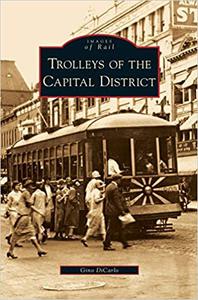
Gino DiCarlo, "Trolleys of the Capital District"
English | 2009 | ISBN: 0738562610, 1531640621 | ASIN: B0099IS272 | EPUB | pages: 128 | 42.4 mb
When it came to first-class transportation, not many regions of North America had more to offer than the trolley lines of New York's Capital District. From their humble beginnings as horse roads forming belts around Albany, Schenectady, and Troy, these trolley lines helped move people around Upstate New York from the late 1800s until their final exit after World War II. The lines of the United Traction Company, Schenectady Railway, and the Hudson Valley Railway provided hundreds of miles of track around their home cities, as well as direct routes to resorts in the Adirondacks, Lake George, and Saratoga Springs. The trolley lines became famous for disasters that made national headlines, labor disputes, and engineering wonders that included the longest trolley bridge in the world. The vintage images in Trolleys of the Capital District provide insight into an era gone by and an often forgotten form of transportation.
E-Books → National Intellectual Capital and the Financial Crisis in Bulgaria, Czech Republic, Hungary, Romania, and Poland
Published by: voska89 on 13-07-2022, 10:00 |  0
0
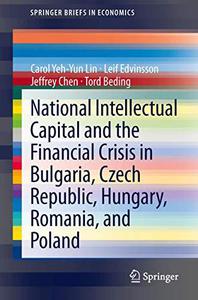
National Intellectual Capital and the Financial Crisis in Bulgaria, Czech Republic, Hungary, Romania, and Poland By Carol Yeh-Yun Lin, Leif Edvinsson, Jeffrey Chen, Tord Beding (auth.)
2014 | 119 Pages | ISBN: 1461480175 | PDF | 5 MB
In the first decade of the twenty-first century, the biggest event of worldwide proportion was the 2008 global financial crisis, which was caused primarily by ineffective governance, failed surveillance systems, and implementation flaws. While fiscal and monetary policies succeeded in pulling many countries out of a financial freefall, most economies have performed beneath pre-recession levels as governments continued to struggle with their finances. Examining the financial crisis from the viewpoint of intangible assets provides a different perspective from traditional economic approaches. National Intellectual Capital (NIC), comprised mainly of human capital, market capital, process capital, renewal capital, and financial capital, is a valuable intangible asset and a key source of national competitive advantage in today's knowledge economy. The authors-pioneers in the field-present extensive data and a rigorous conceptual framework to analyze the connections between the global financial crisis and NIC development. Covering the period from 2005 to 2010 across 48 countries, the authors establish a positive correlation between NIC and GDP per capita and consider the impact of NIC investment for short-term recovery and long-term risk control and strategy formulation.Each volume in a series of SpringerBriefs on NIC and the financial crisis provides in-depth coverage of the impact of the crisis, the aftermath, future prospects, and policy implications for a regional cluster. This volume focuses on Bulgaria, Czech Republic, Hungary, Romania, and Poland.



